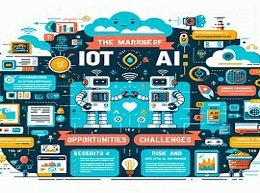Machine Learning Algorithms Demystified for Beginners

Machine learning algorithms are at the heart of modern artificial intelligence systems, enabling computers to learn from data and make predictions or decisions without being explicitly programmed. For beginners, understanding these algorithms can seem daunting. However, with the right guidance and examples, anyone can grasp the fundamental concepts behind them. In this guide, we'll demystify machine learning algorithms and explore their applications through relatable examples.
What is Machine Learning?
Machine learning is a subset of artificial intelligence that focuses on developing algorithms capable of learning from and making predictions or decisions based on data. These algorithms improve over time as they are exposed to more data, making them increasingly accurate and efficient.
Types of Machine Learning Algorithms
1. Supervised Learning
Supervised learning involves training a model on a labeled dataset, where each input is associated with a corresponding output. The goal is to learn a mapping function that accurately predicts the output for new, unseen inputs.
Example: Predicting house prices based on features such as location, square footage, and number of bedrooms using a linear regression model.
2. Unsupervised Learning
Unsupervised learning deals with unlabeled data, where the goal is to uncover hidden patterns or structures within the dataset. This type of learning is useful for tasks such as clustering, anomaly detection, and dimensionality reduction.
Example: Grouping customers based on their purchasing behavior using k-means clustering to identify market segments for targeted marketing strategies.
3. Reinforcement Learning
Reinforcement learning involves training an agent to make sequential decisions by interacting with an environment. The agent learns through trial and error, receiving feedback in the form of rewards or penalties for its actions.
Example: Training an autonomous driving agent to navigate through traffic by rewarding it for reaching its destination safely while penalizing collisions.
Popular Machine Learning Algorithms
1. Linear Regression
Linear regression is a supervised learning algorithm used for predicting continuous target variables. It assumes a linear relationship between the input features and the target variable.
Example: Predicting the sales revenue of a company based on factors such as advertising expenditure, seasonality, and economic indicators using a linear regression model.
2. Decision Trees
Decision trees are versatile supervised learning algorithms that recursively partition the feature space into smaller subsets based on the most informative features. They are intuitive to interpret and can handle both numerical and categorical data.
Example: Classifying emails as spam or non-spam based on features such as sender, subject line, and email content using a decision tree classifier.
3. Support Vector Machines (SVM)
SVM is a powerful supervised learning algorithm used for classification and regression tasks. It works by finding the hyperplane that best separates the data points into different classes while maximizing the margin between classes.
Example: Classifying handwritten digits in images as digits 0-9 using an SVM classifier trained on a dataset of labeled digit images.
Real-World Applications
1. Healthcare
Machine learning algorithms are used in healthcare for tasks such as disease diagnosis, personalized treatment planning, and drug discovery. For example, deep learning models can analyze medical imaging data to detect abnormalities such as tumors or fractures.
2. Finance
In finance, machine learning algorithms are employed for fraud detection, risk management, and algorithmic trading. For instance, anomaly detection algorithms can identify unusual patterns in financial transactions that may indicate fraudulent activities.
3. E-commerce
E-commerce companies leverage machine learning algorithms for personalized recommendation systems, customer segmentation, and demand forecasting. By analyzing customer behavior and preferences, these algorithms can recommend products tailored to individual interests, improving the shopping experience.
Machine learning algorithms are powerful tools that have revolutionized various industries, from healthcare to finance to e-commerce. While they may seem complex at first, understanding the basic principles behind these algorithms is essential for anyone interested in delving into the world of artificial intelligence. By demystifying machine learning algorithms and exploring their real-world applications through relatable examples, beginners can gain a deeper understanding of this fascinating field and kickstart their journey into the realm of artificial intelligence.













